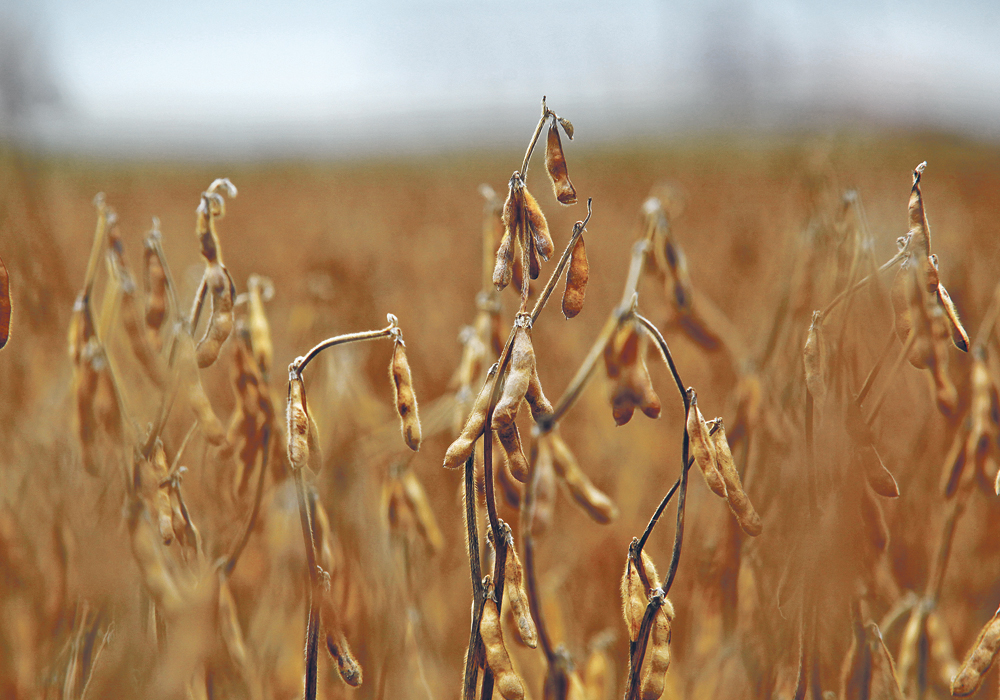Soybean cyst nematode can be managed, but it’s important for the province’s producers to know if it is in their fields
There’s no need to panic.
Soybean cyst nematode, a parasitic worm, has officially arrived in Manitoba, but the world hasn’t ended for soybean growers in the province.
“It’s not at the point where we really are raising major alarm bells,” said David Kaminski, field crop pathologist with Manitoba Agriculture.
“We feel, in general, it is out there at a very low levels. But it is out there.”
Soybean cyst nematode has been confirmed in three municipalities near the U.S. border and one south of Portage la Prairie, Man.
Read Also

Farming Smarter receives financial boost from Alberta government for potato research
Farming Smarter near Lethbridge got a boost to its research equipment, thanks to the Alberta government’s increase in funding for research associations.
Soil and molecular testing in 2017 determined that cysts were present in soil samples from soybean fields.
However, this summer Mario Tenuta of the University of Manitoba found cysts on soybean roots.
“(We) have actually seen some encysted female nematodes infesting soybean plants in commercial fields,” Kaminski said.
“That’s new this year.”
The arrival isn’t surprising because soybean cyst nematode is present in every U.S. state that produces soybeans, including North Dakota.
Like clubroot, a disease that affects canola, soil movement can transport soybean cyst nematode from field to field. Infected soil attached to tractor tires, shoes and clothing are all possible vectors.
Soybean cyst nematode survives in the soil as eggs within dead females, called cysts. These eggs can survive several years in the absence of a soybean crop.
Floodwaters may have transported the cysts into Manitoba from the United States because the worm is commonplace in North Dakota’s Red River Valley.
When the parasite infects soybean roots, it can cause yield losses of 30 percent.
“Infection of SCN can impact growth and yield by removing plant nutrients, disrupting nutrient and water uptake and impeding root growth. It can also reduce the number of root nodules and therefore inhibit nitrogen fixation,” the Manitoba Pulse & Soybean Growers said in a news release.
Above ground symptoms, where plants look stunted and necrotic, have not been detected in Manitoba.
“Unfortunately, there are no distinct, above-ground symptoms specific to SCN,” MPSG said.
“Symptoms may resemble nutrient deficiencies, drought stress or other abiotic factors. Therefore, digging up the roots is the best way to identify this pest.”
The disease is obviously manageable because it has been in soybean growing states and provinces, such as North Dakota, Iowa, Minnesota, Illinois and Ontario, for many years.
However, Manitoba growers need to know if soybean cyst nematode is a problem in their fields and should get their soil tested, said Berlin Nelson, a North Dakota State University plant pathologist.
“That’s the very first step. The laboratories that will check for the egg numbers will give you the egg count. That gives you an idea of how infested the soil is,” he said.
If it is present, soybean growers should use a soybean cyst nematode-resistant variety, consider longer breaks between soybean crops, grow cover crops and try to reduce tillage.
Growers need to monitor soil populations because the population can explode in dry years, Nelson added.
“When you have a year that is favourable for the nematode, it can increase its population very rapidly,” he said.
“Generally, that’s a year that is warm (and) the soil is dry and (on) soils that tend to be more sandy…. Under dry conditions, when there is a bit of drought, the nematode can really reproduce quickly.”
North Dakota growers rely on soybean cyst nematode-resistant varieties, but some populations of nematodes are overcoming the genetic resistance.
“It’s happening here, to some extent, in North Dakota,” Nelson said.
Soil testing and below ground scouting are critical for soybean cyst nematode management because it’s very difficult to see symptoms on a soybean plant.
“You can have a field that’s infested and the nematode is working on those roots, sapping a lot of the energy from those plants … but sometimes you don’t have any obvious, above-ground symptoms,” he said.
“That’s one of the reasons why many growers don’t realize they have it.”


















